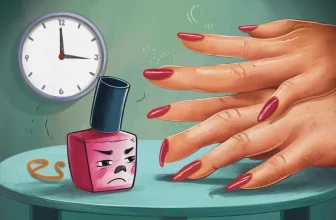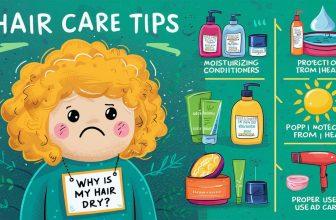How to Get Curly Hair Naturally

Are you tired of using heat-styling tools or chemical treatments to achieve curly hair? If you desire to embrace your natural curls and achieve luscious waves without any damage, this article is for you! In this guide. We’ll explore effective and natural methods to get curly hair without relying on harmful practices. Say goodbye to constant hair damage and embrace the beauty of your natural curls!
Understanding Hair Types
Before diving into the world of natural curls, it’s essential to understand your hair type. Hair texture can range from wavy to curly to kinky, and each type requires different care and styling techniques. Identifying your hair type will help you tailor your hair care routine to achieve the best results.
Embracing Your Unique Texture
One of the most crucial steps in getting curly hair naturally is learning to embrace your unique texture. Curly hair is incredibly diverse, and no two curls are the same. Embrace your curls’ natural pattern and characteristics, as this will empower you to work with your hair rather than against it.
Nourishing Your Hair from Within
A Healthy Diet for Healthy Hair
The journey to natural curls begins from within. The health and look of your hair are significantly influenced by your diet. Consume a balanced diet rich in vitamins, minerals, and protein to promote hair growth and strength. Foods like salmon, nuts, spinach, and avocados can do wonders for your curls.
Hydration is Key
To achieve luscious curls, it’s crucial to keep your hair hydrated. Drink plenty of water throughout the day and consider using a leave-in conditioner to lock in moisture. Hydrated hair is less prone to frizz and breakage, resulting in healthier and more defined curls.
The Curly Hair Care Routine
Shampooing and Conditioning
Choosing the right shampoo and conditioner is vital for curly hair. Opt for sulfate-free, moisturizing products that will cleanse your hair gently without stripping away natural oils. Follow up with a deep conditioner to provide your curls with much-needed hydration.
Detangling with Care
Detangling curly hair can be a delicate process. To gently remove tangles and knots, use a wide-tooth comb or your fingers. To reduce breakage, work your way up from the bottom and start at the end.
Plopping Method
The plopping method is a popular technique to enhance natural curls. After washing and conditioning your hair, wrap it in a soft cotton T-shirt or microfiber towel to encourage curl formation. This method helps minimize frizz and promotes defined curls.
Homemade Hair Masks
Treat your curls to some natural goodness with homemade hair masks. Ingredients like coconut oil, aloe vera, and honey can nourish your curls and add shine. Experiment with different recipes to find the perfect mask for your hair.
Curl-Boosting Products
Look for hair products specifically designed to enhance curls. Curl creams, gels, and mousses can provide extra definition and hold for your curls without weighing them down.
Styling Tips for Natural Curls
The Pineapple Method
The pineapple method is an excellent way to preserve your curls while sleeping. Gather your curls on top of your head, resembling a pineapple, and secure them with a soft hair tie. Flattening and frizz are prevented with this method.
Diffusing Your Hair
When using a hairdryer, opt for a diffuser attachment to disperse the airflow and avoid disturbing the curl pattern. This method allows you to dry your hair while maintaining the natural shape of your curls.
Avoiding Common Mistakes
Over-brushing and Over-washing
Brushing curly hair too often can lead to frizz and breakage. Instead, use your fingers or a wide toothcomb to detangle. Additionally, avoid over-washing your hair, as curly hair tends to be drier and can benefit from fewer washes per week.
Using Heat Too Often
Heat styling tools can damage your natural curls over time. Embrace air-drying whenever possible and limit the use of flat irons or curling wands for special occasions.
Nighttime Hair Care
Protecting Your Curls While You Sleep
To protect your curls while you sleep, consider using a silk or satin pillowcase. These materials cause less friction than cotton, reducing the chances of frizz and hair breakage.
Dealing with Frizz
The Right Brush
If you’re struggling with frizz, invest in a boar bristle brush. This type of brush helps distribute natural oils from your scalp to your hair, taming frizz and adding shine.
Anti-Frizz Hair Products
Explore anti-frizz hair products to keep your curls looking polished throughout the day. Serums and leave-in conditioners can work wonders in reducing frizz and keeping your curls defined.
Embracing the Transition
Patience and Persistence
The transition to natural curls might be challenging, especially if you’ve been using heat or chemical treatments for a long time. Be patient with your hair and give it time to adjust to the new routine.
Styling During the Transition Period
As your hair grows, you might have a mix of textures during the transition period. Experiment with different hairstyles and products to find what works best for your changing hair.
Trimming and Maintenance
Regular Trims for Healthy Curls
Trimming your hair regularly is essential to maintaining healthy curls. Schedule regular appointments with a curly hair specialist to keep your hair in top shape.
Deep Conditioning Treatments
Treat your curls to deep conditioning sessions occasionally. Deep conditioners provide intense hydration, keeping your curls soft, bouncy, and well-defined.
Weather-Proofing Your Curls
Humidity Tips
Humid weather can wreak havoc on curly hair, causing frizz and loss of definition. Apply an anti-humidity product before going out to keep your curls intact.
Protecting Against Dryness
On the other hand, dry weather can lead to moisture loss in your curls. Apply a leave-in conditioner or hair oil to lock in moisture and protect your hair from environmental factors.
Embracing Curly Bangs
Finding the Right Style
Curly bangs can be a trendy addition to your curly hair look. Consult with a hairstylist to find the perfect bangs style that complements your face shape and curl pattern.
How to Trim Curly Bangs
If you prefer to trim your curly bangs at home, do so when your hair is dry. Use sharp, professional scissors and cut small sections at a time to avoid any drastic mistakes.
The Power of Hair Accessories
Clips, Scarves, and Headbands
Experiment with hair accessories to add flair to your curly hair. Clips, scarves, and headbands can transform your look and showcase your unique style.
DIY Curly Hair Styles
Messy Buns and Updos
Create effortless and chic hairstyles with messy buns and updos. These styles work exceptionally well with curly hair, adding a touch of elegance to any look.
Half-Up Half-Down Curls
For a versatile and feminine look, try half-up half-down hairstyles. This style lets you show off your curls while keeping them neatly in place.
FAQs
Can I achieve curly hair naturally without using any products?
Yes, you can embrace your natural curls without using products. However, incorporating nourishing hair masks and curl-enhancing products can enhance and define your curls further.
How often should I trim my curly hair?
It's recommended to trim curly hair every 8 to 12 weeks to maintain its health and shape.
What is the best way to combat frizz in curly hair?
Using anti-frizz hair products, such as serums and leave-in conditioners, along with proper hair care techniques, can help combat frizz effectively.
Can I still straighten my hair occasionally without causing damage?
If you wish to straighten your hair occasionally, be sure to use a heat protectant spray and limit heat exposure to prevent excessive damage.
Conclusion
Embracing your natural curls is a journey of self-discovery and self-acceptance. By understanding your hair type, nourishing your curls, and following a proper hair care routine, you can achieve beautiful, healthy curls without relying on harmful practices. Remember, each curl is unique and deserves to be celebrated.






